Inside the attack that almost sent the U.S. to war with Iran
The U.S. airstrike against Iranian-backed militias Thursday night was the latest chapter in the poisonous relationship with Iran President Biden inherited from the Trump administration. Thirteen months ago the two countries came perilously close to war. It began with an American drone strike which killed Iran's most powerful general and ended with an Iranian ballistic missile attack against U.S. troops in Iraq. It was the largest ballistic missile attack ever against Americans. Tonight, we will show you for the first time, drone video of the attack and talk to the troops who were there the night the U.S. and Iran went to the brink.
The toll of an Iranian ballistic missile attackWho would live and who would die: The inside story of the Iranian attack on Al Asad Airbase
Alan Johnson in recorded video: Hey buddy. If you're seeing this video some bad things happened to Dad last night... So I need you to be strong, OK, for mom. And just always know in your heart that I love you, OK. Bye buddy.
A few hours after Army Major Alan Johnson recorded that message to his son, Iranian ballistic missiles began raining down on Al Asad Airbase in Iraq where 2000 U.S. troops were based. As a drone recorded the attack, Americans caught in the crosshairs could do nothing but run or duck and cover.
Each missile carried a warhead weighing more than 1,000 pounds.
Alan Johnson: Well, words can't even describe the amount of energy that is released by these, these missiles.
Johnson was taking cover in a bunker designed to protect troops against much smaller warheads weighing only 60 pounds.
Alan Johnson: Knocked the wind out of me followed by the most putrid tasting ammonia tasting dust that swept through the bunker coated your teeth.
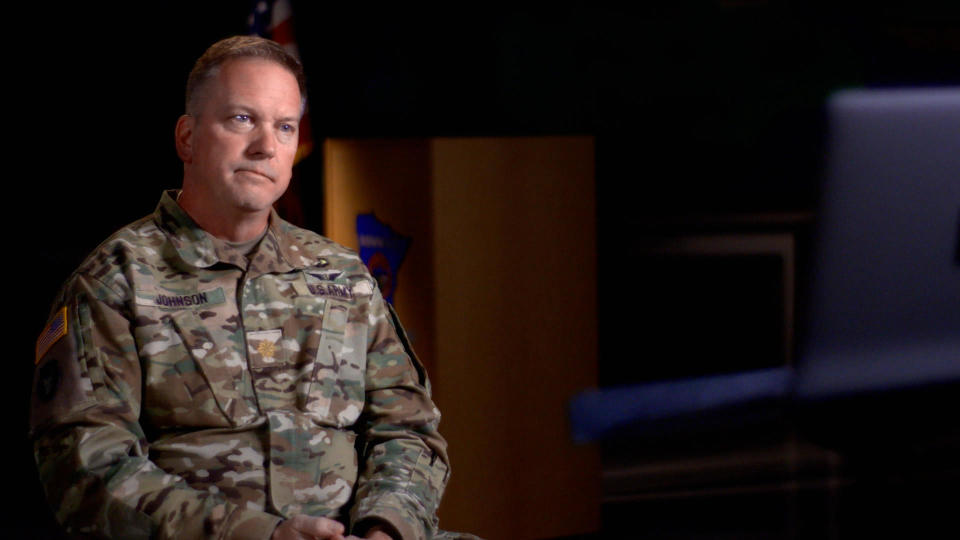
After the blast wave and debris came the flames.
Alan Johnson: The fire was just rolling over the bunkers, you know, like 70 feet in the air.
Johnson's bunker provided no protection from that.
Alan Johnson: We're going to burn to death. We start heading down 135 meters, make it about a third of the way there, the big voice we call it, clicks in, "Incoming, Incoming, Take Cover, Take Cover, Take Cover." I've got another football field to run. I don't know when this next missile's going to hit.
David Martin: Can you hear the incoming?
Alan Johnson: Like a freight train going by you.
Johnson wasn't the only one frantically searching for cover.
Alan Johnson: It's six people running for their lives to get to this next bunker. We get to the bunker and realize there's roughly 40 people trying to stuff themselves into this bunker that's made for about ten folks. And I grabbed the guy in front of me and I'm just like, "You gotta get in the bunker!" And just, like-- like, shoved everybody in there.
David Martin: But, when you're running between bunkers, it's just a matter of, what, luck?
Alan Johnson: Luck. The only thing I can actually come up with is that hand of God protected us. Because, really, nobody should have lived through this.
Frank McKenzie: Things are happening that could take us to war if we don't make the correct move here.
Marine General Frank McKenzie, commander of U.S. forces in the Middle East, monitored the attack from his headquarters at Tampa, Florida - ducking into this small room off his main operations center where he could talk directly to the only two people above him in the chain of command.
Frank McKenzie: They bring in the Secretary of Defense. And then a little bit later they brought in the president to this conversation. We're listening to the reports of the missiles flying.
David Martin: You ever been on one like this?
Frank McKenzie: I've never been on one like this where real missiles being fired at our forces and where I thought the risks were so high.
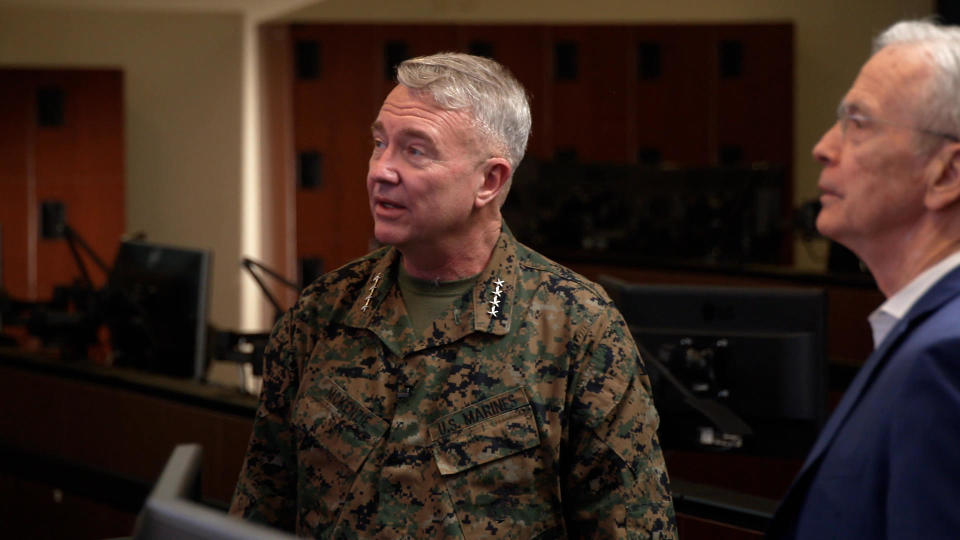
The Iranian attack on Al Asad was in retaliation for a stunning U.S. operation President Trump ordered six nights earlier – a drone strike which killed Iran's most powerful general, Quasem Soleimani.
Frank McKenzie: The blood of many Americans is on the hands of Quasem Soleimani. He was as close to an indispensable man as you could find inside Iran. Where he went violence and death followed.
During the American occupation of Iraq, Soleimani had orchestrated attacks which killed more than 600 U.S. troops and, according to McKenzie, he was planning to do it again.
Frank McKenzie: We saw intelligence reports where Qasem Soleimani was moving various attack streams forward against our forces in Iraq, against our embassy and against other bases there.
David Martin: Were they imminent?
Frank McKenzie: Perhaps in hours, perhaps in days, probably not weeks.

Until then, the U.S. had shied away from going after Soleimani for fear killing such a high-ranking government official would only provoke more Iranian attacks.
Frank McKenzie: I never take killing anyone as, as an easy decision, but I think the risk of not acting in this case outweighed the risks of acting, so, yes, I was good with the decision.
On January 3 of last year, an airport security camera recorded Soleimani's arrival in Baghdad on a commercial flight from Damascus. Mckenzie was watching from a different angle.
David Martin: You have the drones overhead. Do you see him...
Frank McKenzie: Yes.
David Martin: ...get off the airplane?
Frank McKenzie: Yes, Yes.
As Soleimani's entourage pulled away from the plane, McKenzie gave the kill order to the commander controlling the drones.
Frank McKenzie: And then I said, "take your shot when you got it."
Missiles slammed into both vehicles simultaneously.
Frank McKenzie: There's no back slapping. There's no cheering. Because now I have to prepare to deal with the consequences of the action.
General McKenzie was sure Iran would retaliate, but he didn't know how – and neither, for a while, did the Iranians.
Frank McKenzie: I believe they went into a period of disorganization because they had lost the officer who really spoke up and shaped everything up and told them what they were going to do.
David Martin: So it was kind of an ominous silence.
Frank McKenzie: It was a very ominous silence.
David Martin: And what was the first sign that Iran might really be thinking of a ballistic missile attack?
Frank McKenzie: They began to move their ballistic missiles.
The attack was just hours away when Major Alan Johnson got the word Iran's most powerful weapons were aiming for Al Asad.
Alan Johnson: My intelligence officer pulled me aside and basically said, "Sir, I've got some bad news for you." "What's up?" (LAUGH) "We have information that Iran is fueling 27 medium-range ballistic missiles and their intention is to level this base and we may not survive."
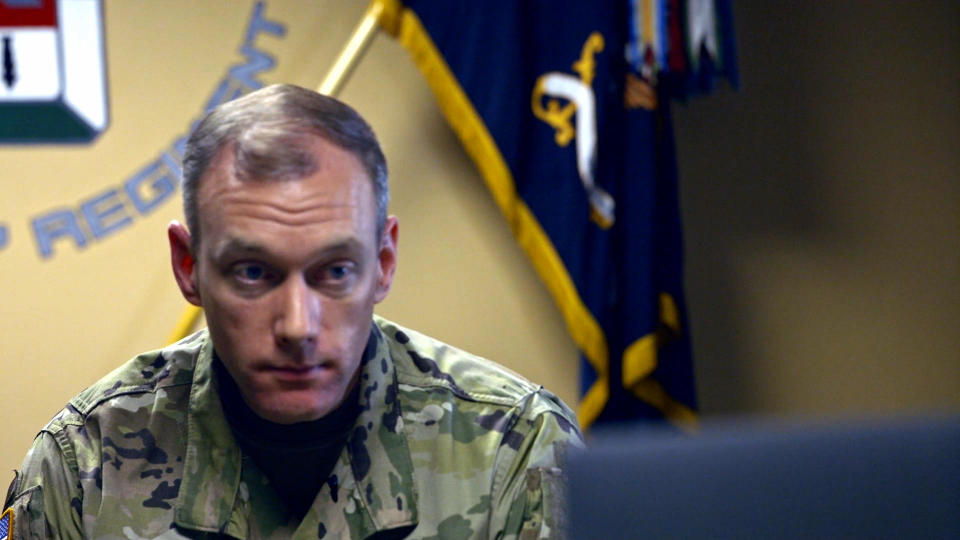
Tim Garland: This is a completely different threat.
Lt. Col. Tim Garland commanded an Army battalion at Al Asad, a sprawling airbase about 120 miles west of Baghdad where the U.S. operated scores of helicopters, drones and other aircraft.
David Martin: Did the base have any defense against ballistic missiles?
Tim Garland: No sir. It was such an unprecedented threat. I don't think it was ever calculated, so the capability to prevent a ballistic missile attack it-- it wasn't there.
David Martin: Did you have a plan for what to do?
Tim Garland: We came up with a plan.
Staci Coleman: The only real defense against a ballistic missile attack is to get out of harm's way.
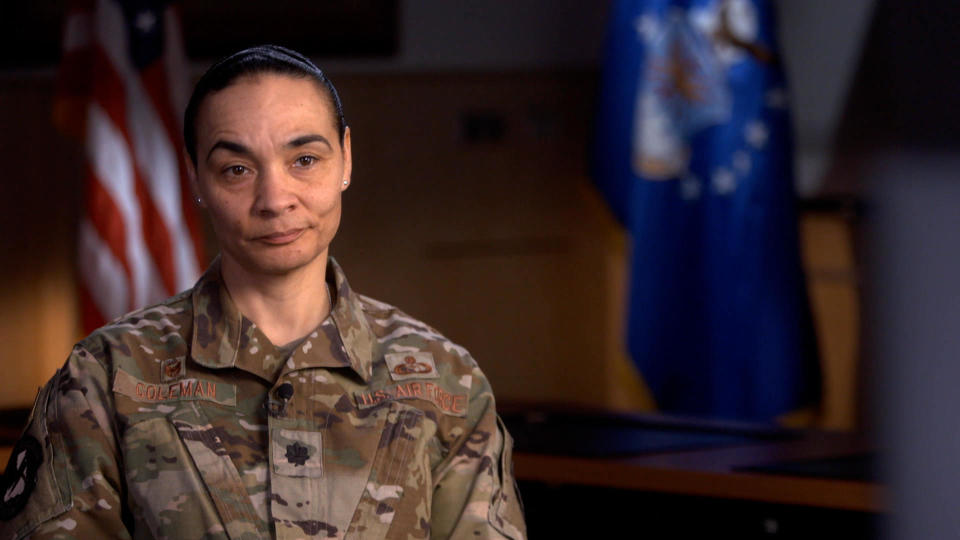
Air Force Lt. Col. Staci Coleman and the rest of Al Asad scrambled to evacuate more than 50 aircraft and 1000 troops before the missiles hit. But the base still had to be manned.
Staci Coleman: We still needed to be able to do our mission. So the first decision was to split our team by combat capability.
David Martin: What did you think was going to happen to the people you were telling to stay?
Staci Coleman: The honest truth is I didn't think that we were going to survive.
The best shelter was air raid bunkers built during the rule of Saddam Hussein – but there weren't enough of them.
Tim Garland: And I just remember, a very heavy sinking feeling setting in. It was like, man, we, we are not going to come up with a bunker plan that's going to be adequate for the number of people that we're talking about.
So Garland sent most of his soldiers out into the desert where they watched the attack from a safe distance.
Tim Garland: There was a lot of people who didn't want to leave. They didn't want to be that guy that was going to relative safety.
David Martin: A lot of people might have trouble understanding what you just said. Tell me why a soldier wouldn't want to go to a safe place.
Tim Garland: They want to carry the burden. They want to share in the danger.
From his headquarters in Tampa, General Frank McKenzie had tried to time the evacuation just right.
Frank McKenzie: If you go too early, you risk the problem that the enemy will see what you have done and adjust his plans.
The Iranians monitored Al Asad by purchasing photos like these taken by commercial satellites. McKenzie waited until after Iran had downloaded its last picture for the day.
David Martin: So the last time the Iranians took a look with their commercially acquired spy photos, what would they have seen?
Frank McKenzie: They would have seen airplanes on the ground and people working.
David Martin: So when they launched those missiles, they thought that was going to be a full flight line.
Frank McKenzie: I think they expected to destroy a number of U.S. aircraft and to kill a number of U.S. service members.
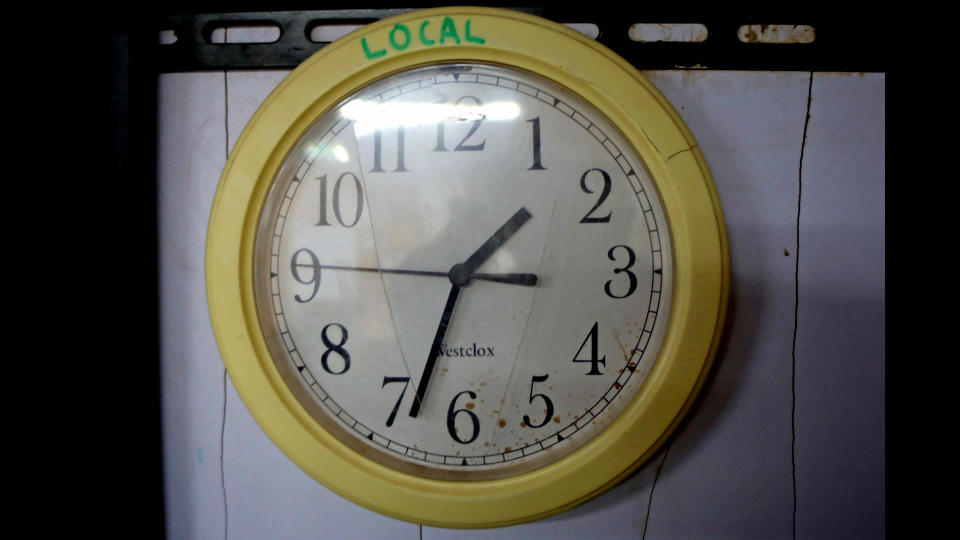
A clock -- stopped at 1:34 a..m. when it was knocked off the wall -- recorded the moment the first missile landed.
John Haines: It's like the sun rising instantaneous. That's how bright it was.
Air Force Master Sergeant John Haines and his security team were outside their armored patrol vehicle when the first missiles struck.
John Haines: And across the radio we heard, "Incoming, Incoming, Incoming."
David Martin: What do you do?
John Haines: I just threw the phone down and ran to my vehicle. And once that impact happened the back pressure blew our doors closed and then you just see cloud of dirt, fire.
Staci Coleman: They call it a "shock wave" and you kind of feel that, that wave almost internally. Like, it's almost as if you, your organs are, you know, kind of wavering around inside.
Sgt. Kimo Keltz was outside the bunkers, manning a guard post in case the missile barrage was followed by a ground assault.
Kimo Keltz: We got down and we protected our, our vital organs, our heads, and we waited.
David Martin: Did it blow you around?
Kimo Keltz: In one of the closest ones that had hit directly near us had actually lifted my body about two inches off the ground.
Iran fired a total of 16 missiles from three locations – five missed, 11 landed at Al Asad.
David Martin: This was an attack like no other.
Frank McKenzie: It was an attack certainly like nothing I've ever seen or experienced.
David Martin: What have you learned so far?
Frank McKenzie: Their missiles are accurate.
David Martin: Did that surprise you?
Frank McKenzie: We knew it, but to see it. They fired those missiles to significant range. And they hit pretty much where they wanted to hit.
From first launch to last impact was 80 minutes. Somehow no one was killed. When the sun came up, the survivors surveyed the damage.
Tim Garland: Shells of a building, you know, skeletal frames left with nothing else. Craters about a room size deep into the ground. Concrete barriers blown across a field or a street.
John Haines: It looked like a scene from a movie where everything is destroyed around you, but yet, no one was killed.
Staci Coleman: I still have no idea understanding other than, you know, God being on our side, that no one was seriously injured and there were no, you know, no, no fatalities.
The news traveled fast up the chain of command and President Trump tweeted "all is well." That turned out to be premature.
Alan Johnson: There are people throwing up, everybody had headaches.
Kimo Keltz: I had a concussion for two weeks.
David Martin: What'd it feel like?
Kimo Keltz: Someone hitting me over the head with a hammer over and over and over.
Alan Johnson: Finally, you know, hours later we realized, "We have a mass casualty event here of traumatic brain injury."
Military doctors diagnosed more than 100 cases of traumatic brain injury. Major Alan Johnson and 28 other soldiers received purple hearts.
David Martin: Do you have any lingering effects today?
Alan Johnson: Headaches every day, horrible tinnitus or ringing in the ears. PTSD. You know, I'll be willing to admit that. I still have nightmares.
But the nightmare of war with Iran had been averted.
Frank McKenzie: Had Americans been killed, it would have been very different.
David Martin: Have you ever done an estimate on if you hadn't evacuated the damage that would have been done?
Frank McKenzie: Sir, I think we might have lost 20 or 30 airplanes and we might have lost 100 to 150 U.S. personnel.
David Martin: You had a plan to retaliate if they killed Americans.
Frank McKenzie: David, we had a plan to retaliate if Americans had died.
Iran was on alert for a possible U.S. strike and hours later mistakenly shot down a Ukrainian airliner, thinking it was an American bomber. 176 entirely innocent people died.
Trump gives first public speech since leaving office and declares "journey" is not over

